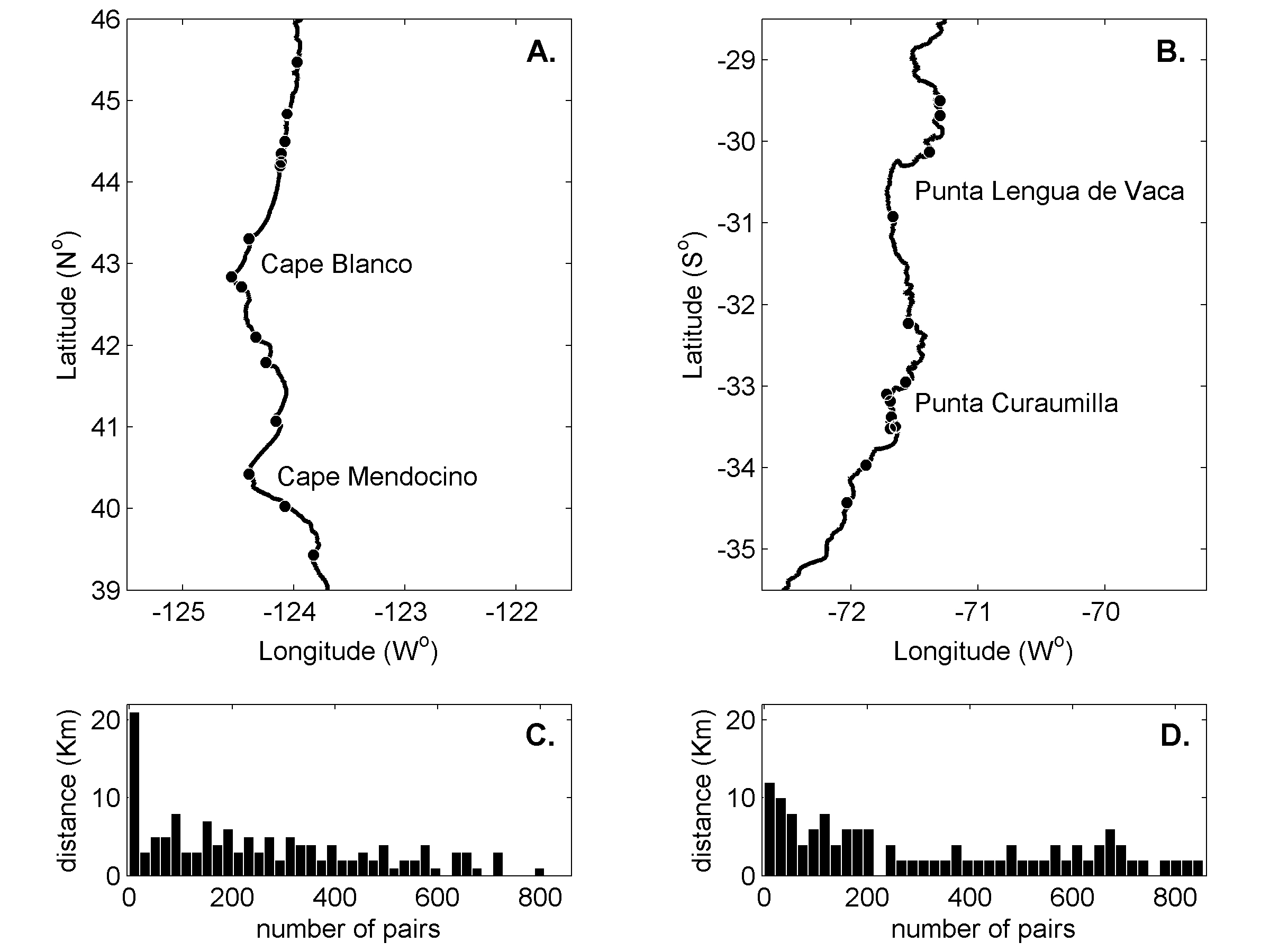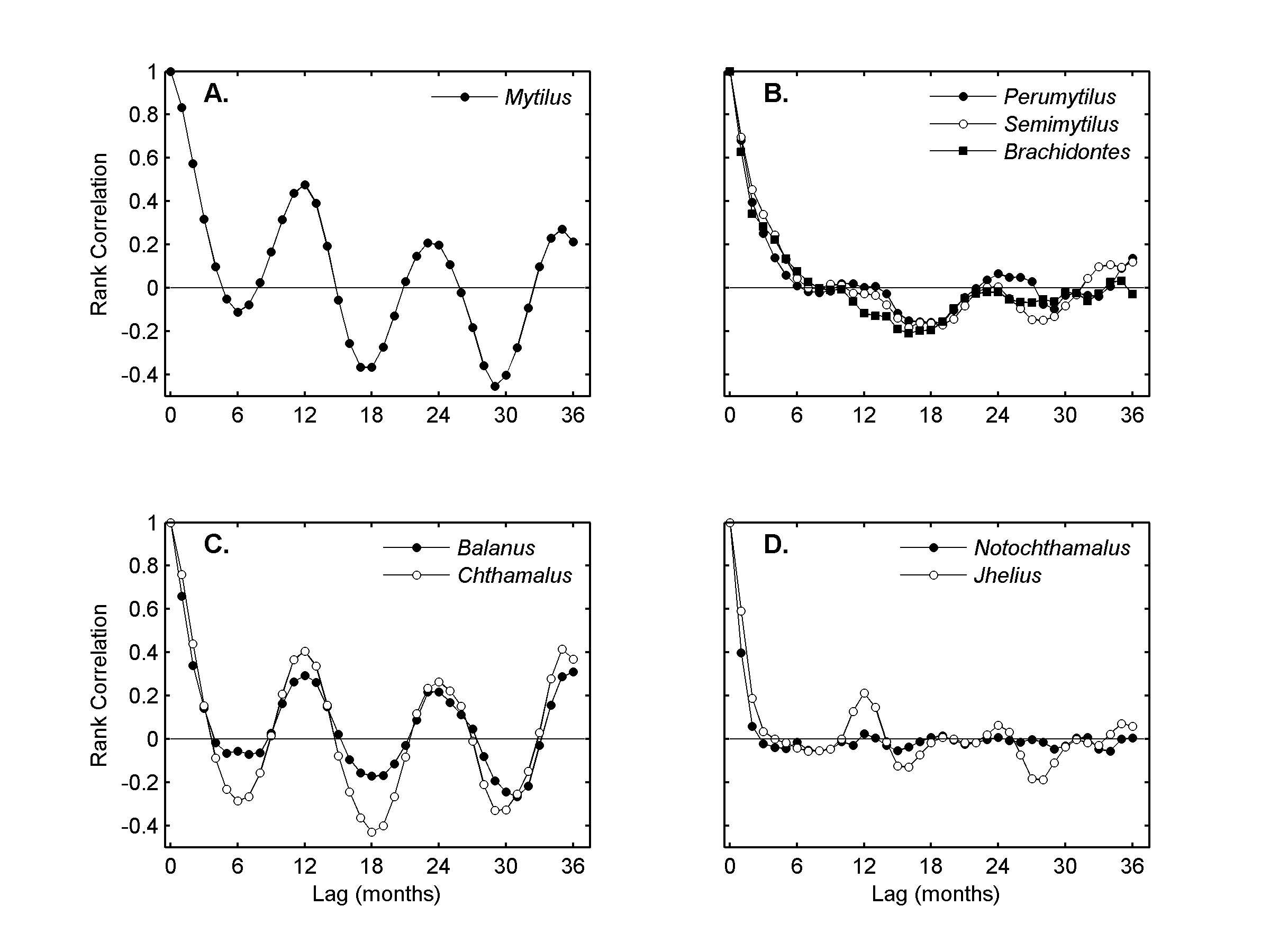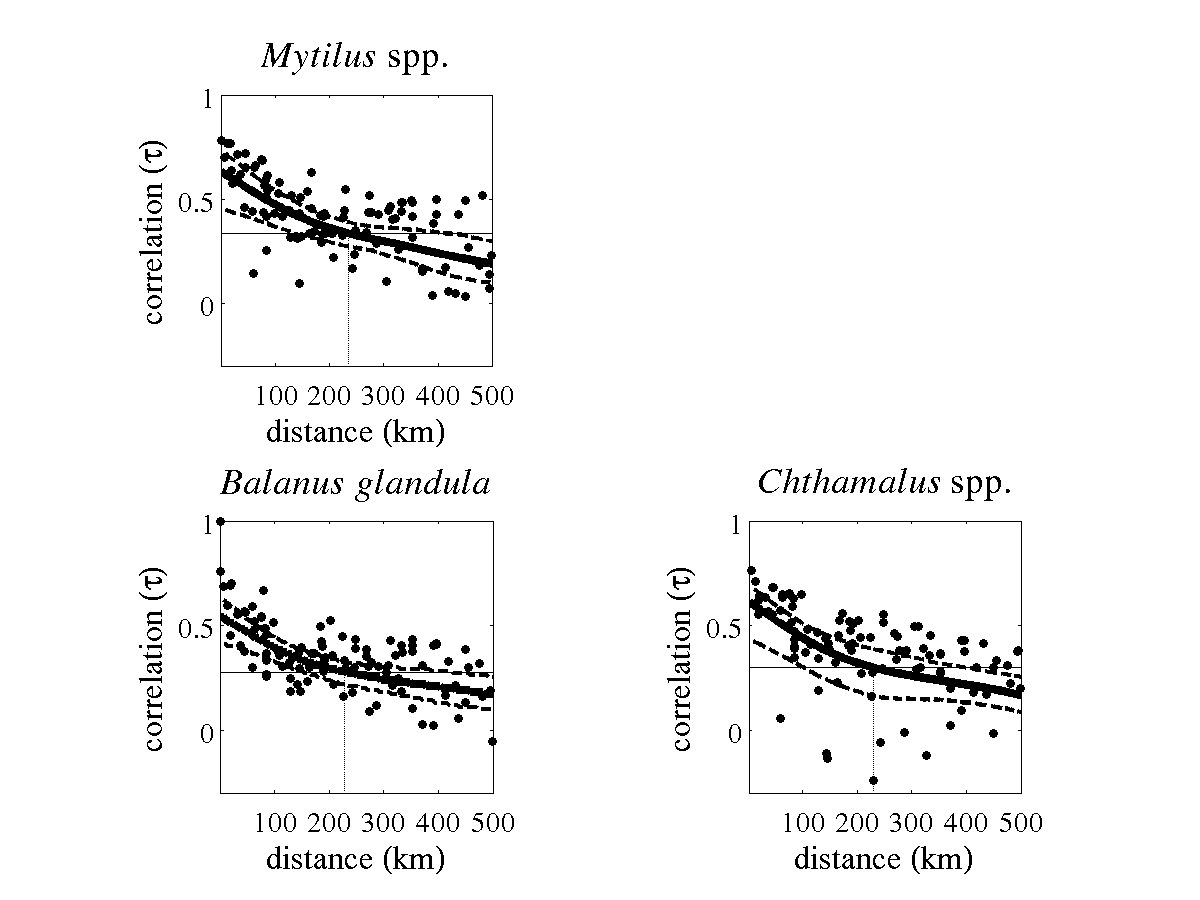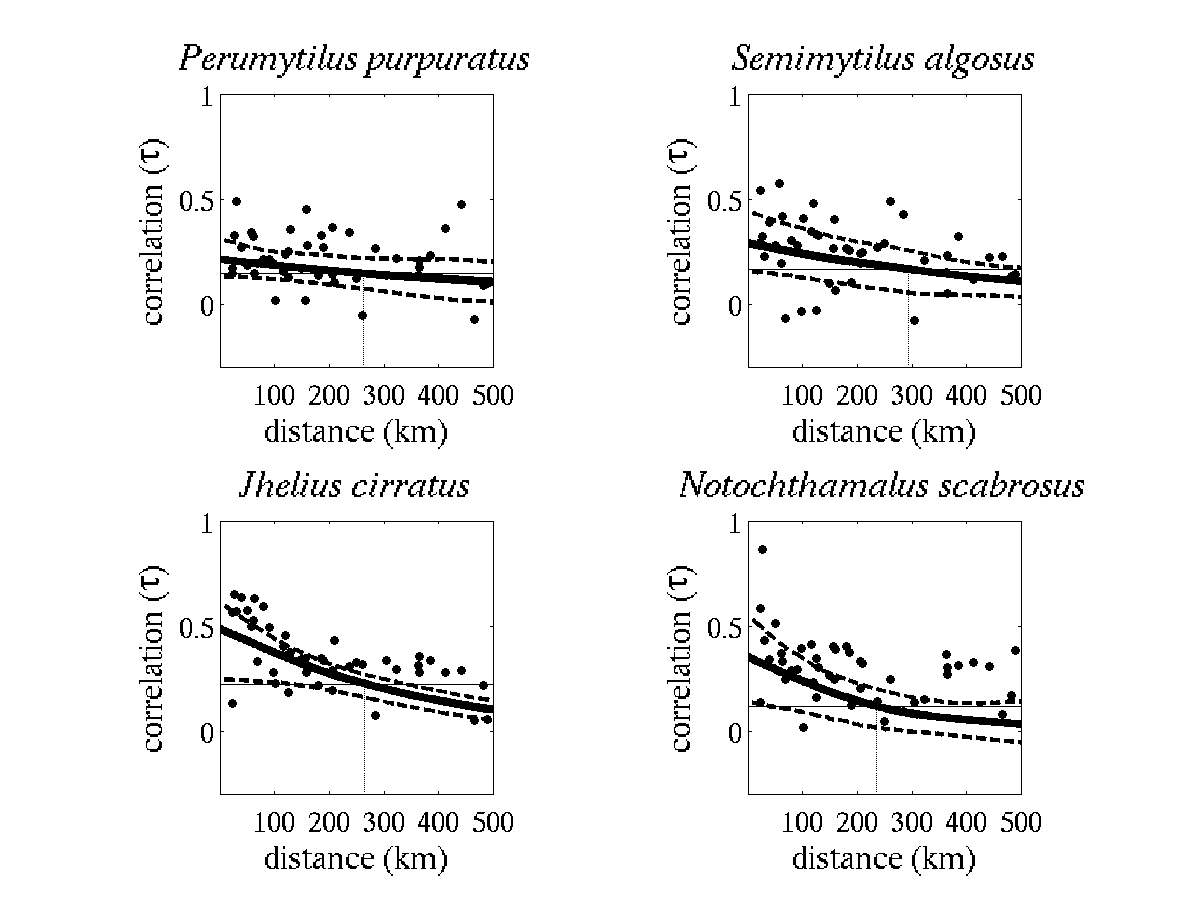
The analyses presented in the present comparison were carried out using time series of larval recruitment rates from the north and south temperate portions of the Eastern pacific. Time series were obtained using larval collectors deployed on the mid intertidal zone of exposed rocky shores of Oregon and Northern California (USA) and Central Chile. The data covers a total of 8 years of monthly field monitoring at 16 sites in USA and 12 sites in Chile. Sites were separated by a maximal distance of ~850 km in both countries.
 |
| Temporal autocorrelation patterns in the recruitment time series of Mussels and Barnacles clases along the coast of Oregon - northern California (A and C) and Central Chile (B and D), respectively. |
Spatial and temporal patterns of larval recruitment along the open coast of the Eastern Pacific are
notoriously unpredictable which makes the use of traditional parametric estimators of association
difficult (Connolly et al. 2001, Lagos et al. 2005, Broitman et al. 2005).
In order to estimate spatial scales of synchrony of recruitment rates
We used Kendall's τ coefficient of association to calculate correlation between time series and a nonparametric
estimator of covariance based on fitting splines to the spatial correlogram (Bjornstad & Falk 2001).
Figure 1 below shows the correlation-by-distance relationships between time series of larval recruitment
rates in (A) Oregon-Northern California and (B) Central Chile.
A remarkable result is that all species share an extremely similar correlation length but this
distances differs between hemispheres. A length of about ~230 km is observed in USA, while Chile is charachterized
by a slightly longer correlation length of about ~260 km (Table 1.)
Correlograms of spatial coherence in recruitment rates at USA and Chile
| A. Oregon - Northern California | B. Central Chile |
 |
 |
| Table 1. | ||||||||||||||||||||||||||||||
| Oregon - Northern California | Mussels | Barnacles | ||||||||||||||||||||||||||||
| Species | Mytilus spp. | B. glandula | Chthamalus spp. | |||||||||||||||||||||||||||
| Regional Correlation (τ) | 0.3354 | 0.2761 | 0.2067 | |||||||||||||||||||||||||||
| Correlation Length (Km) | 234 | 228 | 230 | |||||||||||||||||||||||||||
| Correlation Length (Months) | 2 | 1 | 2 | |||||||||||||||||||||||||||
| Central Chile | Mussels | Barnacles | |||
| Species | P. purpuratus | S. algosus | B. granulata | J. cirratus | N. scabrosus |
| Regional Correlation (τ) | 0.1446 | 0.1637 | 0.0915 | 0.2230 | 0.1167 |
| Correlation Length (Km) | 262 | 294 | n.s. | 265 | 233 |
| Correlation Length (Months) | 1 | 2 | 1 | 1 | 0 |